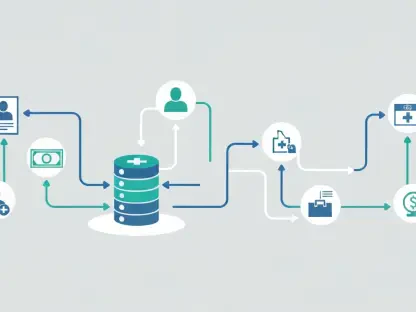Organizations today increasingly rely on security software to protect against cyber threats, but there’s a critical aspect that often goes overlooked: understanding where and by whom this software is developed. This knowledge is vital for mitigating risks associated with malicious code insertions and ensuring robust cybersecurity defenses. High-profile cyberattacks, like the infamous SolarWinds hack, have highlighted the vulnerability that can stem from trusting software without adequate scrutiny. The consequences of such attacks can be devastating, ranging from unauthorized access to sensitive data to the complete takeover of critical systems.
The complexity of modern software development makes it challenging to maintain transparency and security throughout the process. Companies may outsource parts of their development to third-party vendors or employ teams spread across different countries. Each of these practices introduces potential weak points that adversaries could exploit. This scenario underscores the necessity for organizations not only to trust but to verify the origins and maintenance processes of their security software. Engaging in regular code reviews, adopting secure coding practices, and understanding the development lifecycle are critical steps in this ongoing battle for cybersecurity integrity.
The Necessity of Reviewing Source Code and Development Processes
Security is only as strong as its weakest link, and for many organizations, that link may be their software’s codebase. To safeguard against vulnerabilities, it’s crucial to delve into the origins of this code. Knowing who writes and maintains the software provides insights into potential risks and helps in taking preventive measures. By scrutinizing the source code, organizations can identify any hidden backdoors or malicious code that may have been inserted during the development process. This statement cannot be overemphasized, especially given the complexity and interconnectedness of modern software systems.
The SolarWinds hack serves as a stark reminder of the vulnerabilities that can arise from a lack of stringent code review processes. During this high-profile cyberattack, malicious actors were able to insert malicious code into widely used software, compromising numerous organizations that trusted the affected product. This incident laid bare the potential dangers of not thoroughly vetting the development processes and teams responsible for the software used within an organization. Ensuring stringent review mechanisms and secure coding practices can significantly reduce the risk of such incidents.
Furthermore, understanding the development lifecycle and the people involved can highlight areas of risk. It’s not enough to ensure impeccable code quality; one must also vet the development processes to maintain integrity throughout the software’s lifecycle. This multi-faceted approach allows for the identification of weak points at various stages, from initial code writing to final deployment. Vetting the personnel involved in the coding also contributes to a more secure development ecosystem, ensuring that those with access to critical code understand and adhere to secure practices.
The Complexities of Global Software Development
In today’s interconnected world, software development often involves teams spread across various countries. This global distribution adds a layer of complexity to ensuring the security of security software. Companies like Microsoft exemplify this challenge, with development teams located in diverse regions such as Israel, India, and China. Bringing together a myriad of cultural and regional influences can foster innovation but also introduces risks that need to be carefully managed and mitigated.
Microsoft’s experience shows how international regulations and geopolitical considerations shape software development. For instance, Microsoft adapted Windows 10 to meet specific Chinese government regulations, creating a custom version. This scenario illustrates the necessity of complying with differing regional requirements, all while maintaining security standards. The intricate balance between adhering to local regulations and ensuring the software’s universal integrity highlights the tightrope that global development teams must walk. This necessity for adaptability can stretch resources thin and complicate the implementation of a consistent security standard.
The interconnection of global teams can be both a strength and a vulnerability. While it allows for diverse inputs and innovations, it also means that developers from different regions may be subject to varied threats and pressures. For example, geopolitical tensions or different local data privacy laws can affect how developers approach software security. Organizations must navigate these complexities carefully to avoid compromising their software’s security. They must ensure that all development teams adhere to a unified set of security protocols and standards, despite the diverse legal and operational landscapes.
Monitoring Network Traffic and Detecting Anomalies
Once the origin and processes behind software development are understood, the next critical step is continuous monitoring of network traffic to detect any potential anomalies. Monitoring tools like Sysmon for Windows and Linux can aid in tracking network connections, process creations, and file changes. These monitoring systems help establish a baseline for normal activity, making it easier to spot deviations that could signal a security breach.
For instance, tracking unexpected outbound internet traffic can reveal unauthorized data exfiltration attempts. Such monitoring ensures that if malicious actors breach a system, their movements and activities become more detectable. Continuous vigilance in this area allows for early detection of potential breaches, enabling swift responses to mitigate damage. If an organization can quickly identify and respond to these anomalies, they stand a much better chance of thwarting an attack before it can cause significant harm.
Moreover, integrating these monitoring tools with a centralized logging system can enhance visibility across the entire network. This consolidation helps in correlating events and detecting patterns indicative of sophisticated intrusion attempts, further bolstering the organization’s security posture. A centralized system ensures that all data points can be analyzed in context, providing a holistic view of the organization’s cybersecurity landscape. This approach allows for more effective detection of complex attack patterns that may otherwise go unnoticed.
Ensuring Security of Embedded Software in Hardware
It’s not just the software running on systems that requires scrutiny; the hardware components within an organization also house vital embedded software. Devices such as switches, routers, and Wi-Fi adapters have firmware that, if compromised, can serve as a backdoor for attackers. This aspect of cybersecurity is often overlooked but is equally important in maintaining a secure environment. Hardware vulnerabilities can be particularly insidious, given that they operate at a fundamental level of the system’s infrastructure.
Organizations must verify the origins of these hardware components and their embedded software. Ensuring that reputable vendors manufacture these devices can significantly reduce risk. By choosing trusted vendors and suppliers, organizations can mitigate the risks associated with compromised hardware components. Additionally, routine audits of firmware updates and patches are necessary to maintain the security integrity of hardware devices. Regular updates and patches ensure that known vulnerabilities are quickly addressed, preventing them from being exploited by malicious actors.
Monitoring unusual outbound traffic from these devices is crucial for detecting hidden threats. For example, if a Wi-Fi adapter is communicating with an unexpected external server, it could indicate a potential compromise that requires immediate action. Vigilance in this area ensures that any suspicious activities can be swiftly detected and addressed. Organizations should implement systems that can catch such anomalies and flag them for further investigation. This capability helps in identifying potential security breaches before they can escalate into more severe problems.
Securing Cloud Services and Azure Configurations
In today’s interconnected world, software development often involves teams spread across various countries. This global distribution adds a layer of complexity to ensuring the security of software. Take Microsoft, for example. Their development teams are located in diverse regions like Israel, India, and China. While this geographical diversity promotes innovation, it also introduces risks that must be carefully managed.
Microsoft’s experience highlights how international regulations and geopolitical factors shape software development. For instance, Microsoft created a custom version of Windows 10 to comply with specific Chinese government regulations. This scenario illustrates the necessity of adhering to distinct regional requirements while maintaining robust security standards. Balancing local regulations with the software’s universal integrity reveals the tightrope that global development teams must walk. This need for adaptability can stretch resources and complicate the implementation of consistent security measures.
Global teams can be both a strength and a vulnerability. Diverse inputs and innovations are beneficial, but developers from different regions face varied threats and pressures. For example, geopolitical tensions or differing data privacy laws can influence how developers handle software security. Organizations must carefully navigate these complexities to avoid compromising their software’s security. Ensuring all development teams follow a unified set of security protocols and standards, despite the diverse legal and operational landscapes, is crucial. This cohesive approach is essential for maintaining the integrity and security of software in a globally distributed development environment.









